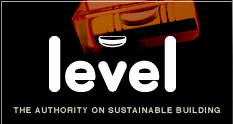News Items
What's New
Participate in our website survey.
Help shape the future of our websites.
BRANZ is an independent and impartial research, testing and consulting organisation inspiring the building and construction industry to provide better buildings for New Zealanders.
Taking part in this BRANZ Website survey is voluntary, and a completed survey implies consent. To complete the survey, simply respond to each question as required. You can pull out of the survey at any time before finishing the questions. However, a competed survey cannot be withdrawn. Your survey responses will be kept confidential and anonymised. This means that none of your answers can ever be used to identify you. Once BRANZ receives your input the data is stored securely and access is restricted to our research team.
The survey takes about 10 minutes to complete.
------------------------------------------------------------
Seismic changes in building design
Update of NZS 1170.5.
Future changes in the seismic design of apartment blocks, office and commercial buildings and other structures are flagged in the publication of technical specification TS 1170.5 Structural design actions - Part 5: Earthquake actions - New Zealand. The standard NZS 1170.5 helps engineers design structures that comply with Building Code’s earthquake resistance requirements. It is referenced in Building Code clause B1 Structure.
The new technical specification significantly increases requirements, including lifting design seismic loads for many locations and changing the way ground conditions are allowed for. The changes come after a reassessment of earthquake shaking hazard in a revision of the National Seismic Hazard Model released in 2022. Estimates of the likelihood of future earthquake shaking hazard increased throughout most of the country, ranging from almost no change to more than doubling in some areas. GNS Science said that, on average, results had increased by 50% or more from previous modelling.
TS 1170.5 will be published and available during a transition period as an alternative solution for demonstrating Building Code compliance. Standards NZ says that TS 1170.5 lets engineers voluntarily road test, and put into practice, new technical specifications in the context of the updated NSHM. It is likely to eventually become mandatory.
25 February 2024
------------------------------------------------------------
Fire safety in mass timber buildings
Design help released.
Timber Unlimited has published Fires safety in multi-storey mass timber structures to provide interim recommendations for multi-storey mass timber structures to supplement the use of Acceptable Solution C/AS1 and Verification Method C/VM2. The document is intended to give guidance to architects, developers and the building industry, providing recommendations for an emerging area of building construction.
25 February 2024
------------------------------------------------------------
Increases in the waste levy coming
Class 1 and class 2.
From 1 July 2024 the waste levy for construction and demolition fill (class 2) rises from $20 per tonne (excluding GST) to $30 per tonne, and for municipal landfill (class 1) from $50 to $60 per tonne (excluding GST).
Half of the levy money collected goes to city and district councils to spend on waste minimisation activities; the balance, less administrative costs, is added to the Waste Minimisation Fund.
25 February 2024
------------------------------------------------------------
Regulations around engineered stone?
Australian ban from 1 July.
WorkSafe says it has contributed to advice for the Minister for Workplace Relations and Safety about options for regulatory intervention in the engineered stone sector in New Zealand.
Australia’s Work Health and Safety and Workplace Relations Ministers have agreed to ban the use, supply and manufacture of all engineered stone from 1 July 2024. Dust generated from working with engineered stone (commonly used in kitchen benchtops) can cause potentially fatal diseases. In Australia, of the 4,743 workers screened, approximately 11% received a probable or confirmed diagnosis of silicosis because of workplace exposure to crystalline silica dust.
The health risks apply in the New Zealand engineered stone industry too. As of 1 August 2023, 190 claims had been lodged with ACC for assessment of accelerated silicosis, which can develop within 3–10 years of exposure to crystalline silica dust.
The Australian ban applies to engineered stone, which contains up to 97% crystalline silica. While natural stones used for benchtops also contain crystalline silica, it is at much lower levels – typically around 30% for granite and 2–5% for marble.
25 February 2024

